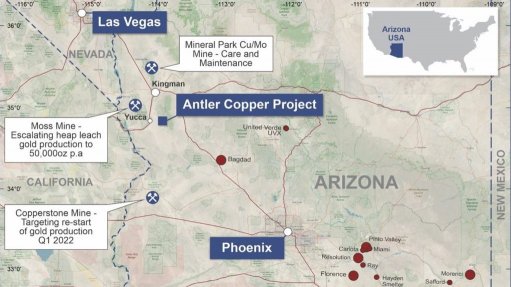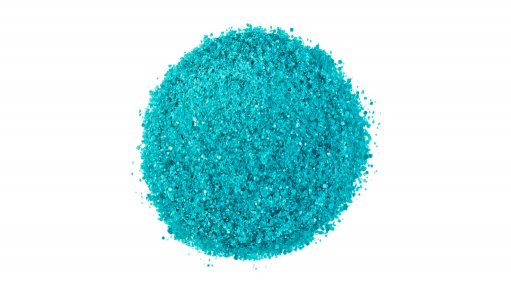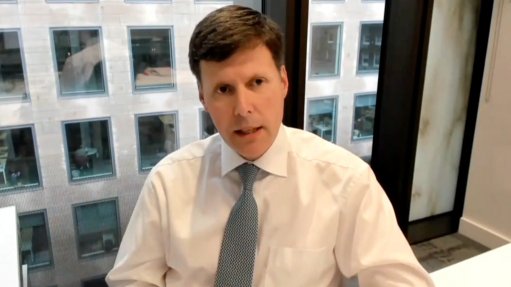World unlikely to resolve copper deficit soon – CDAA



PRODUCTIVITY PRUDENT Africa needs to develop new downstream businesses and secure the local production of products through a copper master plan
CRIMINALLY CAPTIVATING The financially rewarding copper scrap export market continues to entice local copper cable theft
While the improved management of copper scrap recycling is crucial to supplement future mined supplies to address the world’s seemingly perpetual copper deficit, copper cable theft continues to be a hindrance locally, says local copper industry representative Copper Development Association Africa (CDAA).
Copper demand is expected to increase by more than 50% between now and 2040, and could outstrip supply by more than six-million tons a year by 2030, according to energy research firm BloombergNEF’s first global copper outlook published this year.
“The current global supply of copper is possibly 25-million tonnes a year, while the demand is closer to 27-million tonnes. Exploration for new fields is ongoing, but it takes time to develop a new copper mine and it is unlikely that the world will catch up soon,” says CDAA executive chairperson Evert Swanepoel.
As the world scurries to reach net-zero carbon emissions by 2050, alternative energy will continue to be the largest driver of copper demand going forward, he advises.
Electric vehicles use 75 kg of copper, 50 kg more than combustion engine vehicles, while solar photovoltaic solutions use five to six times more copper per megawatt than fossil-fuelled power stations and wind turbines use three to four times more copper.
Zambia and the Democratic Republic of Congo are Africa’s biggest copper producers, generating about one-million tonnes a year and almost two-million tonnes a year of copper respectively.
However, even at these volumes, Africa still supplies only about 10% of the world’s copper, says Swanepoel, highlighting that production from the rest of the continent’s copper mines is insignificant in comparison, even with the inclusion of new mining developments in the Northern Cape, such as diversified metals developer Orion Minerals’ Prieska and Okiep projects.
To ensure that Africa can derive maximum value from the copper it produces, the continent needs to develop new downstream businesses and secure the local production of products through a copper master plan, which will result in lower ex-factory prices and stimulate export, he notes.
“This will be difficult, as it is envisaged that the copper price will continue to rise, dangling a huge carrot – in the form of lucrative foreign exchange rates – in front of local copper miners, prompting them to look abroad.
“At this stage, the African Mining Vision is not involved and the copper master plan must first be established and accepted by the Southern African copper industry before it can be expanded to the rest of Africa. Nothing has been formally put forward yet and the African Union has not been included in any development,” explains Swanepoel.
In addition, the CDAA is not driving the development of this plan, as it should include the copper cable industry which is not a member of the association.
“The Department of Trade, Industry and Competition would be the catalyst but first we have to resolve the scrap issue as only brass is being exported legally. There are no statistics for the export of copper scrap which is being melted and exported as blocks, billets or ingots through third parties with no International Trade Administration Commission permit applications. No export duties are paid on the export of copper scrap as it bypasses the system, which is a huge loss for government,” advises Swanepoel.
South Africa is the only African country with downstream development of any significance, with scarcely any copper beneficiation happening in the rest of Africa.
Going forward, the CDAA hopes to play a promotional role in this regard, preferably to be outlined in the copper master plan, advises Swanepoel, adding that the roll-out of rooftop solar installations across Africa, as well as plumbing products, could be a huge market for local copper beneficiation.
However, South Africa’s sophisticated copper manufacturing industry continues to be greatly hindered by limited raw material supply.
“While local manufacturers have turned to recycled copper, it is costly, as the local scrap industry exports copper scrap legally and illegally at considerably high prices. Unless government can assist in resolving this problem, it will be significantly difficult for local manufacturers to remain competitive and develop an export market for finished products,” warns Swanepoel.
The financially rewarding copper scrap export market continues to entice local copper cable theft, which is strangling the South African economy and is “one of the biggest problems slowing government’s efforts to restore the Transnet rail network, without which the country will not survive”, he laments.
The CDAA trusts that the current initiative by government to monitor and control the export of copper scrap will increase the supply of raw copper material and trigger a renewed interest in the production of copper alloyed products locally.
“Copper theft has led to substitutions and, while substitutions are normal in the business cycle, the replacement of copper by inferior products often leads to devastating results. We believe it is important that we resolve the copper theft problem and use the correct material for the application,” concludes Swanepoel.
Comments
Press Office
Announcements
What's On
Subscribe to improve your user experience...
Option 1 (equivalent of R125 a month):
Receive a weekly copy of Creamer Media's Engineering News & Mining Weekly magazine
(print copy for those in South Africa and e-magazine for those outside of South Africa)
Receive daily email newsletters
Access to full search results
Access archive of magazine back copies
Access to Projects in Progress
Access to ONE Research Report of your choice in PDF format
Option 2 (equivalent of R375 a month):
All benefits from Option 1
PLUS
Access to Creamer Media's Research Channel Africa for ALL Research Reports, in PDF format, on various industrial and mining sectors
including Electricity; Water; Energy Transition; Hydrogen; Roads, Rail and Ports; Coal; Gold; Platinum; Battery Metals; etc.
Already a subscriber?
Forgotten your password?
Receive weekly copy of Creamer Media's Engineering News & Mining Weekly magazine (print copy for those in South Africa and e-magazine for those outside of South Africa)
➕
Recieve daily email newsletters
➕
Access to full search results
➕
Access archive of magazine back copies
➕
Access to Projects in Progress
➕
Access to ONE Research Report of your choice in PDF format
RESEARCH CHANNEL AFRICA
R4500 (equivalent of R375 a month)
SUBSCRIBEAll benefits from Option 1
➕
Access to Creamer Media's Research Channel Africa for ALL Research Reports on various industrial and mining sectors, in PDF format, including on:
Electricity
➕
Water
➕
Energy Transition
➕
Hydrogen
➕
Roads, Rail and Ports
➕
Coal
➕
Gold
➕
Platinum
➕
Battery Metals
➕
etc.
Receive all benefits from Option 1 or Option 2 delivered to numerous people at your company
➕
Multiple User names and Passwords for simultaneous log-ins
➕
Intranet integration access to all in your organisation




















